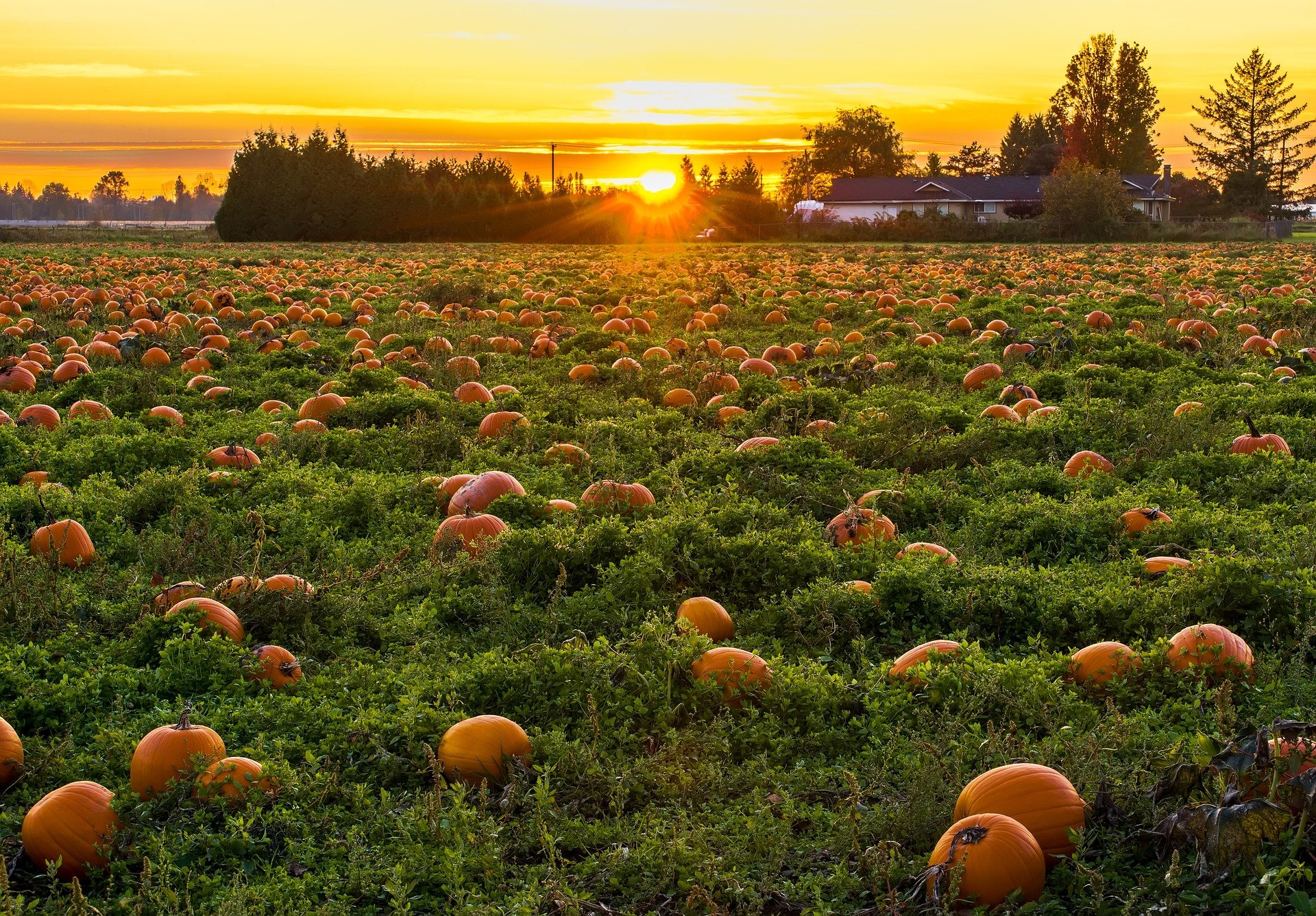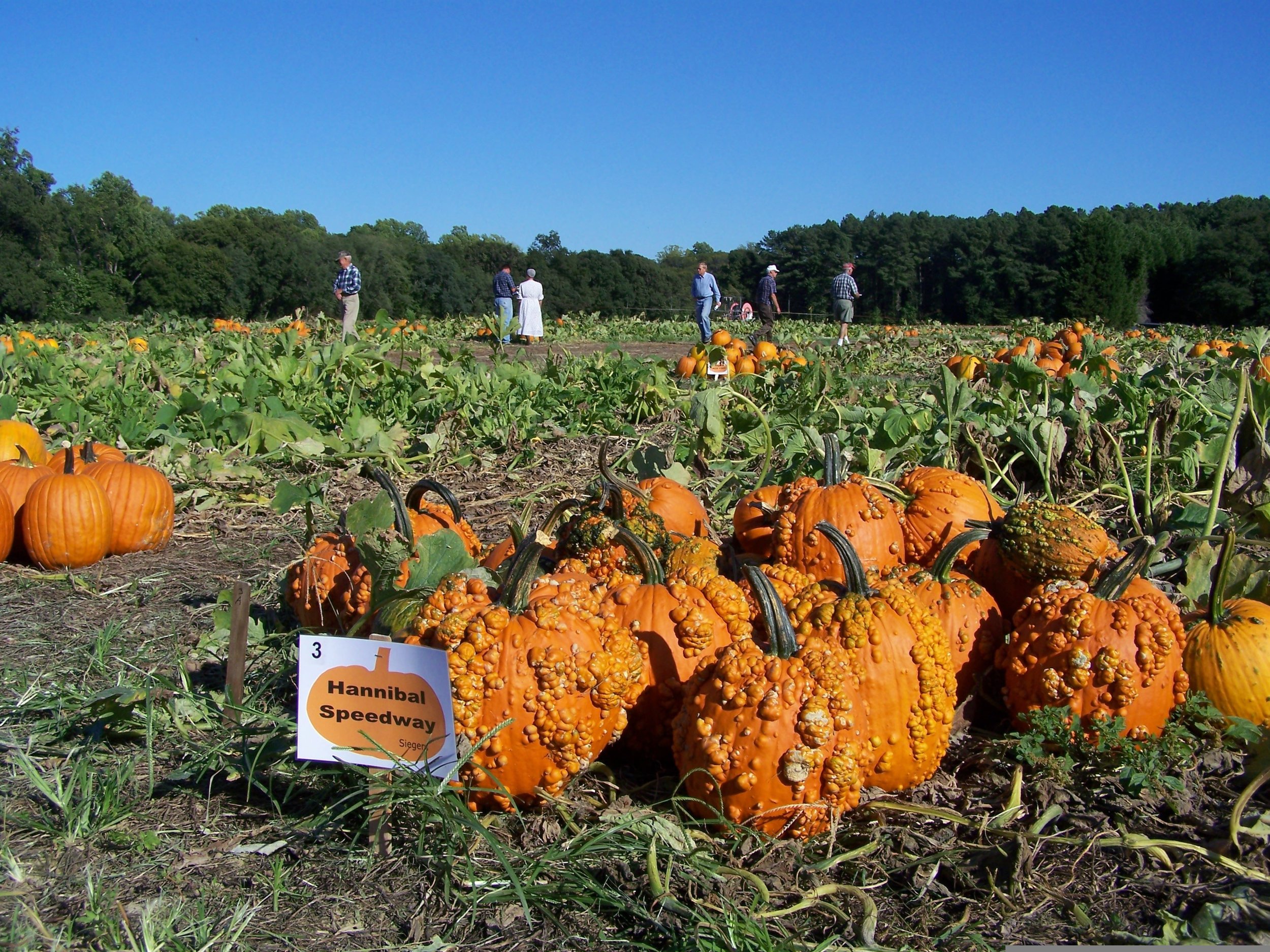It is difficult to think of autumn while the weather is miserably hot and humid, but in a few weeks the temperatures will drop, leaves will start to show color, and the words “pumpkin spice” will appear everywhere. Bring on pumpkin season! Whether you visit a pick-your-own patch or purchase yours from a grocery store, there are a few steps you can take to ensure that your chosen pumpkin lasts as long as possible.
Select a fresh, unblemished specimen. Small cuts on the surface of the skin may appear insignificant, but they are an entryway for rot-causing bacteria. A freshly cut pumpkin’s stem may have a greenish tint or be completely green. Dry, brittle stems indicate that the pumpkin has been harvested a while, and may have a shorter storage life. If choosing between a green-stem specimen with a surface cut or gash and a specimen with a dry, brown stem, select the brown stem. Once bacteria has entered the fruit, decay quickly follows. Use care to avoid breaking or damaging the stem and do not use it as a carry handle. Instead, lift the fruit by placing both hands under the bottom and cradling it gently. A sound, ripe pumpkin will make a “thwack” sound when you thump it, much like a ripe watermelon. This test is useless for me, since I prefer to purchase green or mostly-green specimens. (Weird, I know.)
There are a number of recommendations on the internet for making fall fruits last longer. I have tried several of these. First, washing the surface with a diluted bleach water seems to work, as does keeping the fruit cool and out of direct sunlight. One site recommended spraying the surface with WD-40. It gave the fruit a pretty sheen, but the silicone seeped through the straw onto my brick walkway, leaving an oily-looking spot for weeks beyond Thanksgiving.
Opinions differ on what makes a pretty fall pumpkin. Some people opt for the traditional round, orange globes with faint ribbing. There are many other choices. I love those that are warty, but at least one of my friends finds those disgusting and creepy. Other pumpkins have a skin surface that looks (to me) like a blood-shot eyeball. These are not my favorite, but they do open an opportunity for some interesting carving opportunities. Check out the wide variety of gourds now available. I especially like Turk’s Turban, a two-level squash that is mostly orange on the large lower level and multicolored on the smaller top. Crown of Thorns squash resembles a patty-pan squash that has grown a series of horns. Two-toned crookneck gourds come in a variety of color combinations.
I like to combine several of these options into fall arrangements. If you are using pumpkins or gourds in an indoor centerpiece, use a clear glass or plastic underplate or a double thickness of wax paper to protect your table or counter from moisture. Conceal the protective layer with Spanish moss or raffia shreds. Outdoors, place your fall squashes on a layer of straw, pine needles or mulch to prevent direct contact with the soil. This will help keep insects from damaging their skins.
Lopsided pumpkins lend themselves to the creation of cool faces and designs. Another option is to paint designs on the pumpkin rather than carve. Although it is great fun for each member of the family to select and carve their own Jack-o-lanterns, any cut fruit will decay faster than uncut fruit. There are amazing Jack-o-lanterns available on Pinterest, but I lack the vision and manual dexterity to create one. Instead, I learned that you can use metal cookie cutters and a rubber mallet to cut perfect stars and heart. Rubbing a little petroleum jelly on the cut edges keeps them from curling inward as the first sign of self destruction. For lighted carvings, using a battery-powered tealight instead of a candle is safer and helps the fruit stay fresh longer.
If your pumpkin has not decayed, share your post-holiday discarded fruits with zoos or goat owners. Animals find them tasty.
Bit of trivia: Early jack-o-lanterns were carved turnips, not pumpkins. From Wikipedia, the “name comes from the reported phenomenon of strange lights flickering over peat bogs, called will-o’-the-wisps or jack-o’-lanterns. The name is also tied to the Irish legend of Stingy Jack, a drunkard who bargains with Satan and is doomed to roam the Earth with only a hollowed turnip to light his way.”


